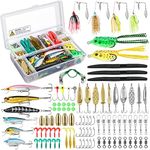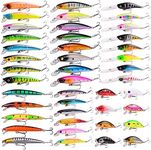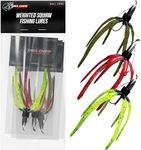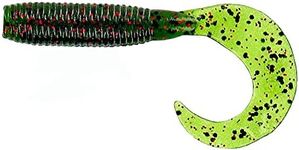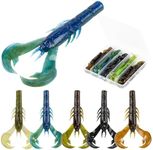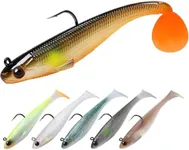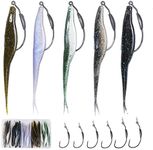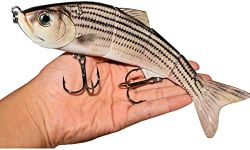Buying Guide for the Best Bass Fishing Lures For Ponds
Choosing the right bass fishing lures for ponds can significantly improve your fishing experience and success rate. The key is to understand the different types of lures available and how they work in various conditions. By considering factors such as water clarity, depth, and the behavior of bass in ponds, you can select the most effective lures for your needs.Lure TypeLure type refers to the design and function of the fishing lure. Common types include crankbaits, spinnerbaits, soft plastics, and topwater lures. Each type mimics different prey and has unique movement patterns. Crankbaits are great for covering water quickly and can dive to various depths. Spinnerbaits create flash and vibration, attracting bass in murky water. Soft plastics are versatile and can be rigged in multiple ways to mimic worms, crawfish, or baitfish. Topwater lures create surface disturbances that trigger explosive strikes. Choose a lure type based on the behavior of bass and the conditions of the pond.
ColorColor is crucial because it affects the lure's visibility and attractiveness to bass. In clear water, natural colors like green, brown, and shad patterns work well as they resemble the natural prey. In murky or stained water, brighter colors like chartreuse, white, and black are more visible and can attract bass more effectively. Consider the water clarity and light conditions when selecting the color of your lure.
SizeThe size of the lure can influence the type of bass you attract. Smaller lures (2-3 inches) are ideal for targeting smaller bass or when the fish are less aggressive. Medium-sized lures (3-5 inches) are versatile and can attract both small and larger bass. Larger lures (5 inches and above) are suitable for targeting bigger bass, especially in ponds with a healthy population of large fish. Match the size of your lure to the size of the prey in the pond and the size of the bass you aim to catch.
ActionAction refers to the movement of the lure in the water. Some lures have a tight wobble, while others have a wide, erratic action. The action can trigger different responses from bass. In colder water, a subtle, tight action is often more effective as bass are less active. In warmer water, a wide, erratic action can provoke aggressive strikes. Consider the water temperature and the activity level of the bass when choosing a lure with the appropriate action.
DepthDepth is the level at which the lure operates in the water column. Some lures are designed to float on the surface, while others can dive to various depths. Topwater lures are effective in shallow areas and during low light conditions. Shallow diving lures (0-5 feet) are suitable for fishing around structures like weeds and logs. Medium diving lures (5-10 feet) are great for targeting bass in deeper parts of the pond. Deep diving lures (10 feet and beyond) are used for reaching bass that are holding in deeper water. Choose a lure that matches the depth where bass are likely to be found.
